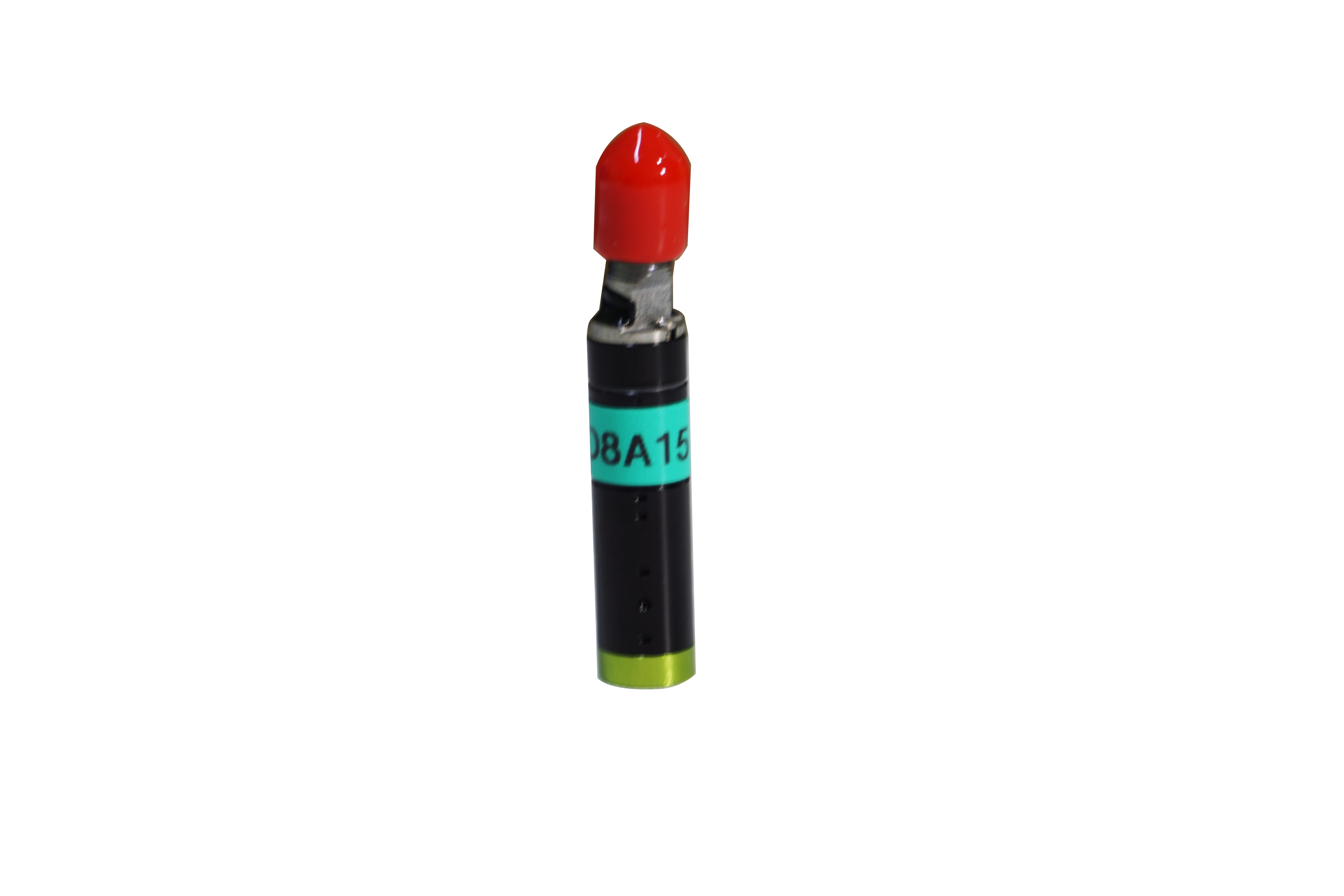2021-09-17
Mixed light is made up of many different wavelengths of light, which we call a spectrum. All the different wavelengths of visible light overlap to form white light. The wavelength of visible light with the human eye ranges from 400nm(blue) to 700nm(red). Through a lens, different colors of light are not focused on the same point. This phenomenon is called chromatic lens error or chromatic lens deviation.

The optical system of the spectral confocal displacement sensor can be seen as two parts, one part is the achromatic field mirror, its focus at the light source, the point light source collimation into parallel light, the other part is the dispersion objective, its role is to focus parallel light of different wavelengths at different positions on the axis, forming spectral dispersion, and achromatic lens and aspherical lens can play such a role.
Because the system needs to analyze the spectral intensity distribution reflected back to the fiber, the confocal process is simulated. In the simulation process, the plane mirror is placed at the focal plane, so that the light passing through the optical system is reflected by the plane mirror and then returned to the optical system, and the image is formed at the position of the light source. By observing the point diagram at the image plane, it is found that when the plane mirror is set at the focal plane of different wavelengths, the dispersion spot at the image plane of focusing wavelength is smaller, while the dispersion spot at other wavelengths is larger.
Natural daylight is a kind of white light, white light is not pure light, but many monochromatic light composition. Light propagation in different media may have the phenomenon of Angle deviation, and the actual white light irradiation of different media will have a lot of single-line light refraction. Optical materials (lenses) for different monochromatic light refractive index is different, that is, the shorter the refraction Angle of different wavelengths, the larger the refractive index, the longer the wavelength of the smaller the refractive index (this is also the reason for the different color difference of different telescopes), the same thin lens for different monochromatic light, each monochromatic light has different focal lengths, according to the wavelength of color light from short to long, Their image points are arranged on the optical axis from near to far away from the lens (the wavelengths of different monochromatic light are different), which produces an image called chromatic lens error. Chromatic lens errors cause images to produce patches or halos.
The spectral confocal measurement method makes use of the characteristics of this physical phenomenon. By using a special lens, the focus halo range of different colors of light is extended to form a special amplification color difference, so that according to the distance between the measured object and the lens, a precise wavelength of light will be focused on the measured object. By measuring the wavelength of the reflected light, the exact distance of the object under measurement to the lens can be obtained. This process is the opposite of the process by which photographic equipment reduces chromatic aberration through various methods.
White light passes through a half lens plane to reach the convex lens. This is where the above special color difference occurs. The light that strikes the object is reflected, passes through the convex lens, and returns to the half lens inside the sensor probe. The half-lens refracts the reflected light onto a perforated cover plate, and the hole allows only the well-focused reflected light to pass through. The light through the perforated cover plate is a group of fuzzy spectrum, that is, several different wavelengths of light may pass through the hole and shine on the CCD photosensitive matrix unit. However, only the reflected light focused on the object under test has enough light intensity to produce a distinct crest on the CCD photosensitive matrix. Behind the perforated cover plate, a splitter is needed to measure the color information of the reflected light. The spectrometer is similar to a special grating that can increase or decrease the refractive index, depending on the wavelength of the reflected light. Therefore, each position on the CCD matrix corresponds to a distance from the measured object to the probe.



